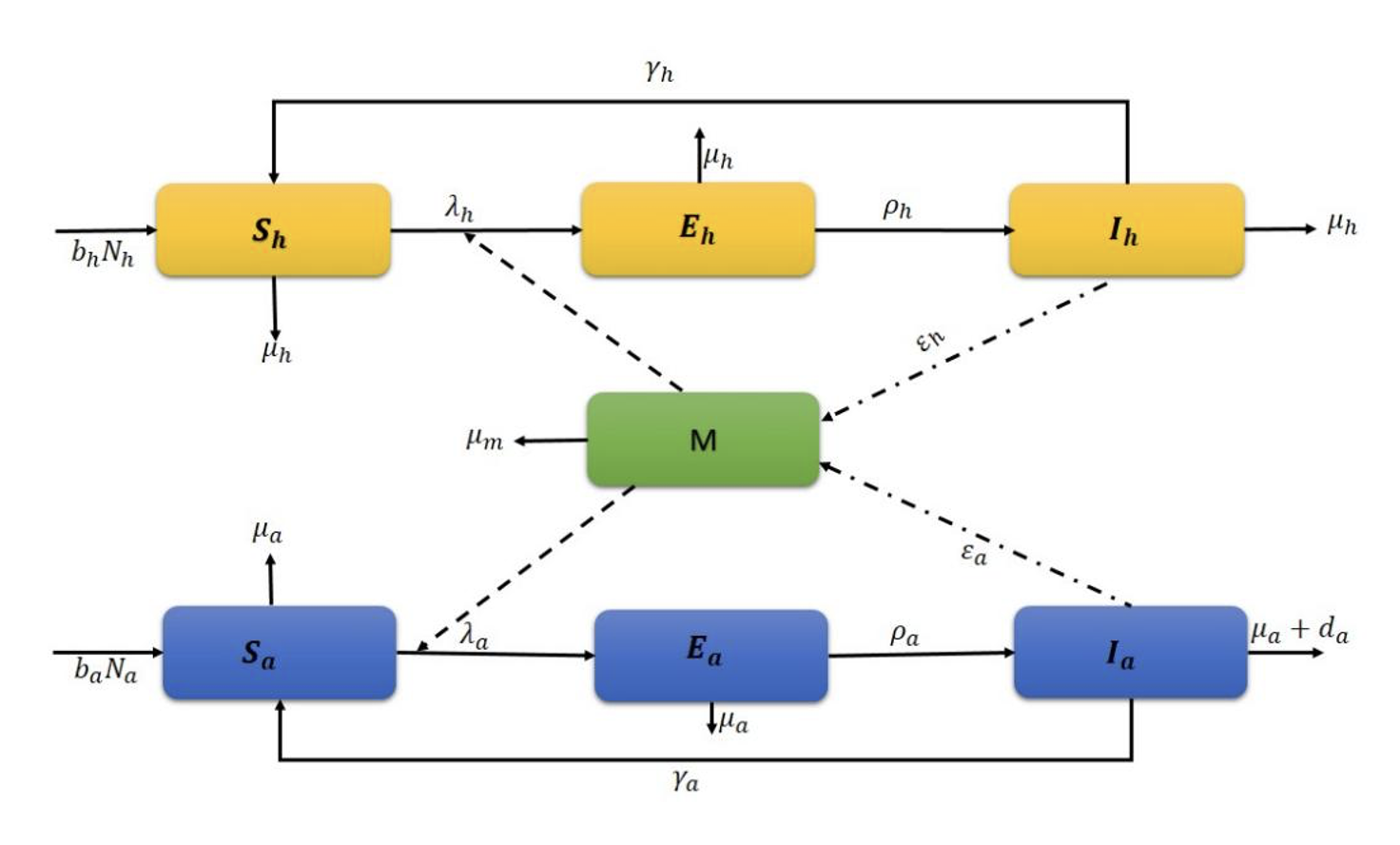VOLUME 18 (Supplement)

SciEnggJ 18 (Supplement) 350-361
available online: 31 October 2025
DOI: https://doi.org/10.54645/202518SupSAR-61
*Corresponding author
Email Address: magavina@up.edu.ph
Date received: 15 August 2025
Date revised: 30 September 2025
Date accepted: 09 October 2025
ARTICLE
Mathematical modeling of soil-transmitted helminth infection: Human-animal dynamics with environmental reservoirs
Bolgatanga, Upper East Region, Ghana
2Institute of Mathematical Sciences, University of the Philippines
Los Baños, Laguna, 4031, Philippines
3Institute of Biological Sciences, University of the Philippines,
Los Baños, Laguna, 4031, Philippines
Soil-transmitted helminth (STH) infections, one of the most prevalent neglected tropical diseases, pose a significant threat to public health in tropical and subtropical areas. These parasites infect humans and animals through direct contact with contaminated soil or accidental ingestion. This study examines the dynamics of STH transmission using a deterministic compartmental model and nonlinear ordinary differential equations. Our model incorporates the roles humans, animals, and the environment play as reservoirs for spreading STH. We derived the basic reproduction number and demonstrated that the disease-free and endemic equilibrium points are asymptotically stable under specific thresholds. We also performed a sensitivity analysis to determine how each parameter affects the model's output. The sensitivity analysis identifies key parameters influencing infection rates, such as ingestion rate, disease progression rate, and shedding rate, all of which increase infection. Conversely, higher clearance and recovery rates decrease infection. The study also highlights the potential for cross-species transmission of STH infections between humans and animals, underscoring the One Health concept, which acknowledges the interdependence of human, animal, and environmental health.
© 2025 SciEnggJ
Philippine-American Academy of Science and Engineering